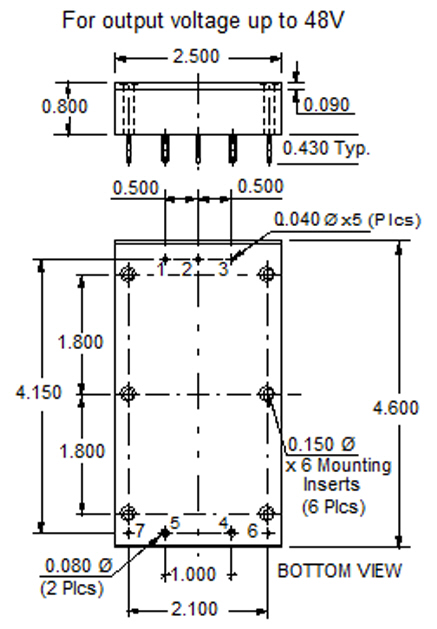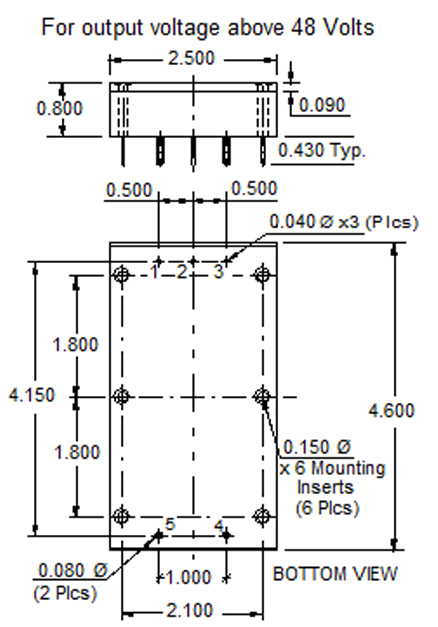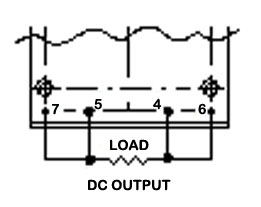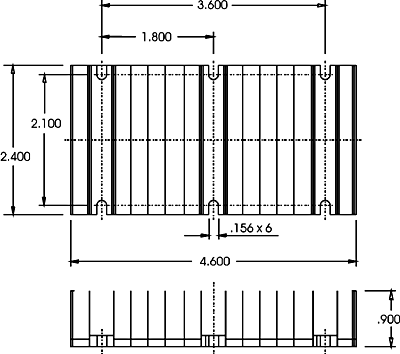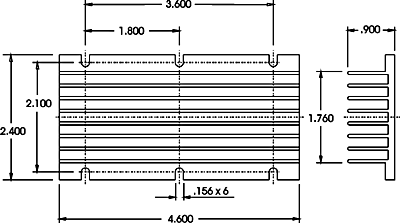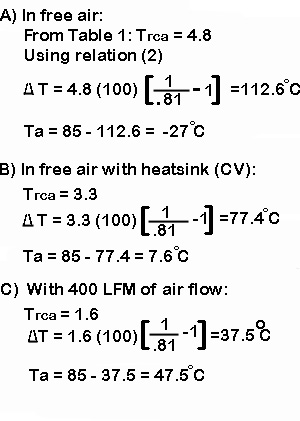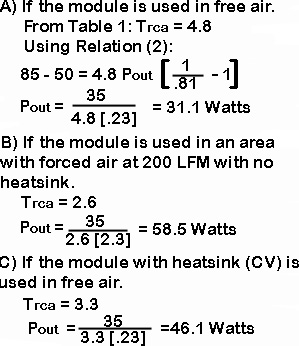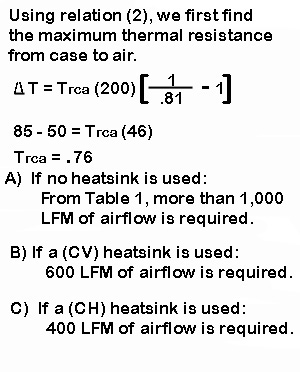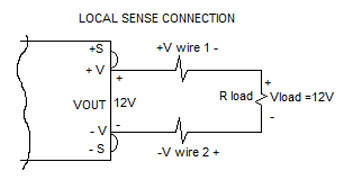Series DC2B
HIGH POWER DC-DC CONVERTER
|
|
INPUT VOLTAGE: 700 - 1200 VDC (Input is reverse polarity protected.) TYPICAL FEATURES/ELECTRICAL CHARACTERISTICS Input Voltage: 700 - 1200 Vdc Output Power: 150 to 300 watts (See Chart) Output Voltage Ripple: 75-500 mV (See Chart) Operating Temperature: 0°C to 85°C Isolation: Current Limit Setpoint: 130% of full load rating (Typical) Overtemperature Shutdown Operating Frequency: 100 Khz Fixed UNDERVOLTAGE SETPOINT IS 670VDC (TYP) OVERVOLTAGE SETPOINT IS 1230VDC (TYP)
|
Weight: 340 Grams Typical |
Weight: 340 Grams Typical |
|
Note: Pins 6 and 7 are for models with output voltages up to and including 48 Volts. They are not on the higher voltage models (greater that 48 Volts) |
|
| Pico Part No. |
Output Voltage VDC |
Max. |
Max. |
EFF @ Full Load (%)* |
Output Ripple Full Load 1-1 MHz BW mv p-p* |
Output Voltage Toler- ance (±%)* |
V Ld. Reg 10-100% Load (±%)* |
Line Regu- lation (±%)* |
Price (US $) |
|---|---|---|---|---|---|---|---|---|---|
| DC2B-5S | 5 | 30 | 150 | 76 | 100 | 1.0 | 1.5 | 0.2 | 270.33 |
| DC2B-9S | 9 | 27.8 | 250 | 78 | 100 | 1.0 | 1.5 | 0.2 | 270.33 |
| DC2B-12S | 12 | 25 | 300 | 80 | 150 | 0.5 | 1.5 | 0.2 | 270.33 |
| DC2B-15S | 15 | 20 | 300 | 80 | 150 | 0.5 | 1.5 | 0.2 | 270.33 |
| DC2B-24S | 24 | 12.5 | 300 | 81 | 250 | 0.5 | 1.0 | 0.2 | 270.33 |
| DC2B-28S | 28 | 10.71 | 300 | 82 | 300 | 0.5 | 1.0 | 0.2 | 270.33 |
| DC2B-48S | 48 | 6.25 | 300 | 82 | 500 | 0.5 | 1.0 | 0.2 | 325.71 |
| DC2B-100S | 100 | 2.50 | 250 | 85 | 250 | 1.0 | 1.0 | 0.2 | 372.47 |
| DC2B-125S | 125 | 2.00 | 250 | 85 | 250 | 1.0 | 1.0 | 0.2 | 372.47 |
| DC2B-150S | 150 | 1.67 | 250 | 85 | 350 | 1.0 | 1.0 | 0.2 | 372.47 |
| DC2B-175S | 175 | 1.43 | 250 | 85 | 350 | 1.0 | 1.0 | 0.2 | 372.47 |
| DC2B-200S | 200 | 1.25 | 250 | 85 | 400 | 1.0 | 1.0 | 0.2 | 465.60 |
| DC2B-225S | 225 | 1.11 | 250 | 85 | 400 | 1.0 | 1.0 | 0.2 | 465.60 |
| DC2B-250S | 250 | 1.00 | 250 | 85 | 500 | 1.0 | 1.0 | 0.2 | 465.60 |
| DC2B-275S | 275 | 0.91 | 250 | 85 | 500 | 1.0 | 1.0 | 0.2 | 465.60 |
| DC2B-300S | 300 | 0.83 | 250 | 85 | 500 | 1.0 | 1.0 | 0.2 | 465.60 |
| * All specifications are typical at nominal (900Vdc) input, full load and 25°C baseplate temperature unless otherwise stated. ** Using proper thermal considerations as outlined in the application notes. |
|||||||||
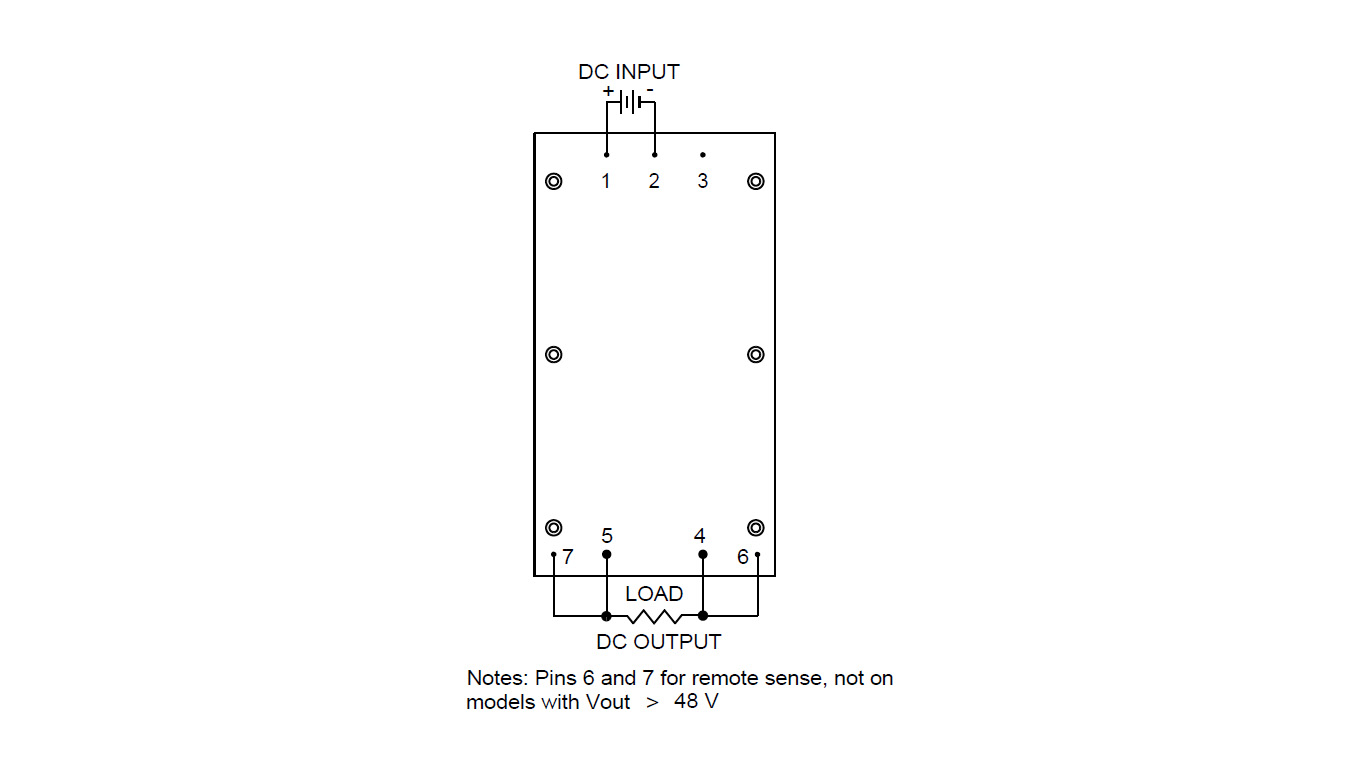
|
CH HEATSINK
|
CV HEATSINK
|
|
All dimensions are in inches ()=mm |
NOTE: Additional Heatsink options, consult factory |
|
|
|
|
|
|
|
|
|
THERMAL INTERFACE
PART TI
Alloy Aluminum Substrate
Thermal Conductivity, (BTU-in/hr ft² ºF) ----1530
Coefficient of Thermal Expansion (25-100ºC, 10-6 in./in. ºF ---13.1
Hardness, Brinnell B ----23
Endurance Limit, psi. ----5000
Standard Thickness (inches) ---.002
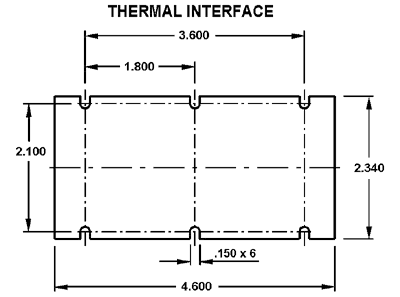
Thermal Considerations
| DC2B Series | |||
|---|---|---|---|
|
|
|
CV |
|
| Free Air |
|
|
|
| 200 LFM |
|
|
|
| 400 LFM |
|
|
|
| 600 LFM |
|
|
|
| 800 LFM |
|
|
|
| 1000 LFM |
|
|
|
|
EXAMPLE 1:
|
EXAMPLE 2:
|
EXAMPLE 3:
|
APPLICATION NOTES
Remote Sense terminals (only on models with output voltages of 48V and below):
Remote Sense terminals must be connected for the unit to operate properly. When connected in local sense (+S connected to +V output terminal and -S connected to -V output terminal), the output voltage is regulated at the output terminals.
If your load is connected more than a few inches away from the unit and you want to regulate the output voltage ON the load, remote sense is required. This means connecting the +S connection at the end of the +V wire (at the load), and the -S connection at the end of the -V wire (at the load). Since the load wires have current flowing through them and they have a certain resistance, there will be a voltage drop in them so that the output voltage at the load will be lower than the output voltage of the unit. Remote sense will prevent this be compensating for up to 1V of drop in the load wires. This means the output voltage of the unit will be up to 1V higher than the nominal value, so that at the load, the voltage will be the nominal value.
Example of local and remote sense connections, using the DC2B-12S with a 0.2V drop in the wires connecting the +V and -V output terminals to the load.
Vout = Voltage on the output voltage terminals of the unit.
Vload = Voltage on the load where the wires are connected.
Vout = Vload + Vwire1 + Vwire2
So, Vload = Vout - Vwire1 - Vwire2
|
With local sense, Vout is regulated at 12V |
With remote sense, Vload is regulated at 12V |
| The voltage drops in the wires connecting the +V and -V output terminals of the unit and the load depend on the size of the wire )or pcboard trace) and the current flowing through them. | |
For immediate engineering assistance or to place an order:
Call Toll Free: 800-431-1064
PICO Electronics, Inc.
143 Sparks Ave. Pelham, NY 10803-1810
Tel: 914-738-1400
Fax: 914-738-8225 _uacct = "UA-1393419-1"; urchinTracker();


